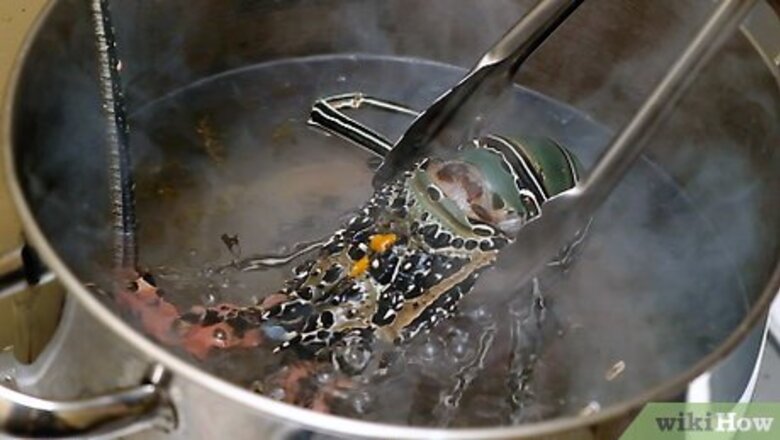
views
Harvesting the Claws and Tail
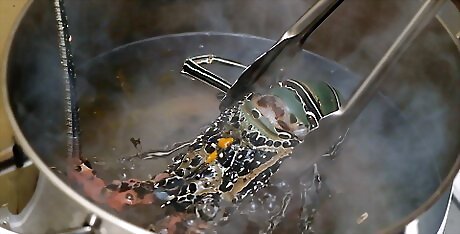
Cook or kill the lobster. Most people boil the lobster alive or immediately after death, with no prepping in advance. Transfer it to an ice bath as soon as it's done cooking, and you're ready to process it. If your recipe calls for raw lobster meat, instead put the live lobster on its belly and kill it humanely with a small, sharp knife where the head meets the body. Clean the raw lobster as described below, but do it over a bowl to catch raw juices, and rinse the meat before cooking it. See these instructions for frozen lobster.
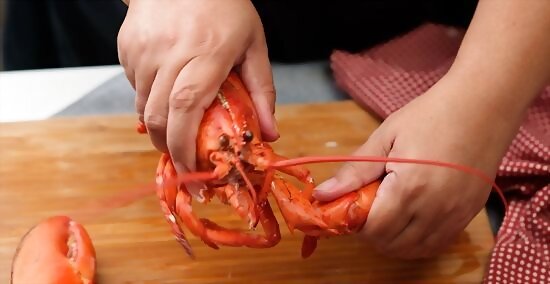
Harvest the claws. Twist the claws off of the lobster or bend them back until they snap. If you have a hard shell lobster, break off the tip of the claws with a nutcracker, scissors, or the back of a heavy knife. Push the meat out from the hole you made down through the "wrist" opening. If you have a soft shell lobster, just extract the meat with your finger.
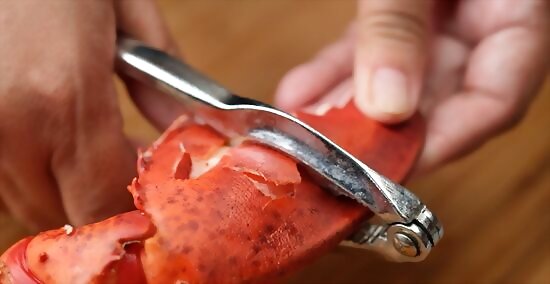
Break off the claw knuckles. The knuckles between the claw and the body are tiny, but the tasty meat inside is worth it. Break these off the claw and crack them open with a nutcracker.
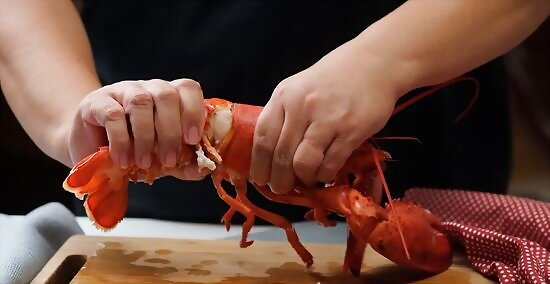
Remove the tail. Uncurl the tail and flatten it out. You can remove by twisting the tail and body in opposite directions, or by pulling the tail back toward the head until it snaps off.

Pick out the lobster's tail flippers. The fan at the end of the lobster tail consists of five flipper-like segments (a central "telson" and four "uropods"). Pull these segments off or cut them off with a chef's knife. There's a tiny bit of sweet meat inside each one, which you can get at with a lobster fork or by breaking the shell.
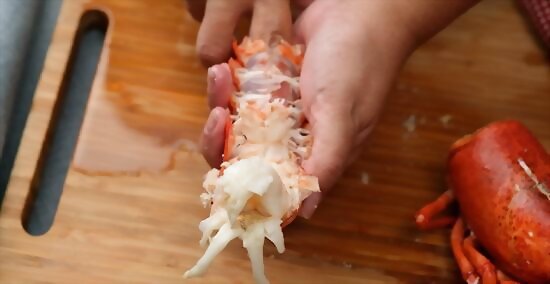
Push out the meat from the tail. Removing the tail fan leaves a narrow hole at the tip of the tail. Push your finger or a lobster fork into this hole to push the meat out the other end, where the tail once met the body. Alternatively, put the tail upside-down on the table. Slice through either side of the shell with a pair of shears or strong scissors. Peel off the underside of the shell and remove the meat.
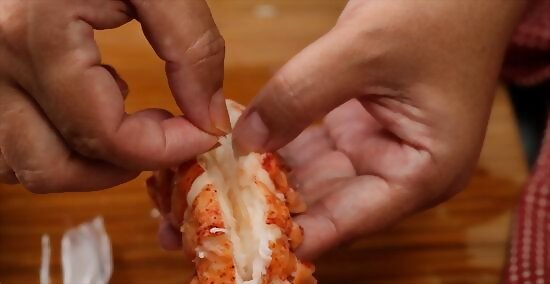
Peel off the intestinal tract. The dark vein running down the tail contains the lobster's waste. Peel or slice this off and throw it away. It might be hiding under a flap of meat.
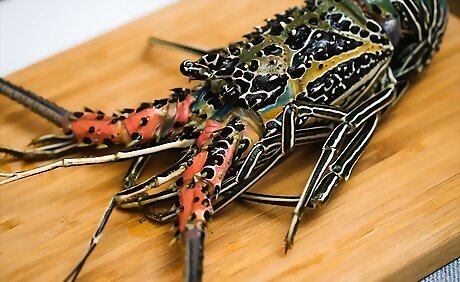
Collect the roe. If you have a female lobster, you might see roe — eggs — inside the tail shell. This turns pink when cooked, which gives it the name "coral." Raw lobster eggs are black. Steam them for a couple minutes until they turn pink before eating.
Harvesting the Body and Legs
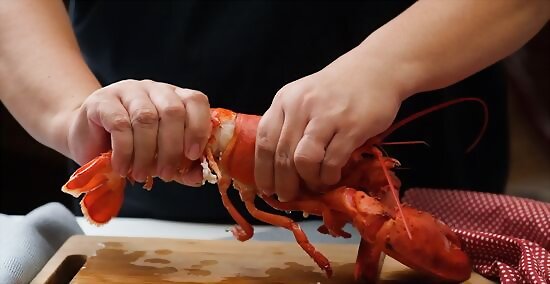
Access the body of the lobster. The tail and claw hold the tastiest meat, but there's plenty in the lobster's body as well. Pull the shell off by hand or crack it open.
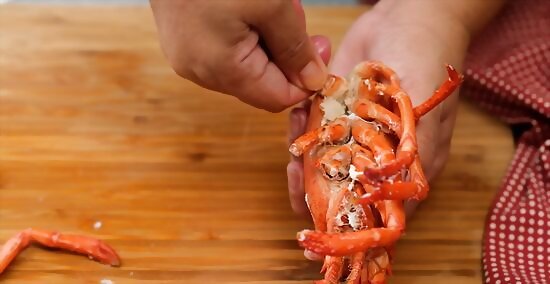
Twist off the eight lobster legs. If you want every last bit of meat, press the meat out of each leg with a rolling pin, starting at the tip. If the lobster is cooked, you can instead place the end of each leg in your mouth and pull the meat down with your teeth while sucking.
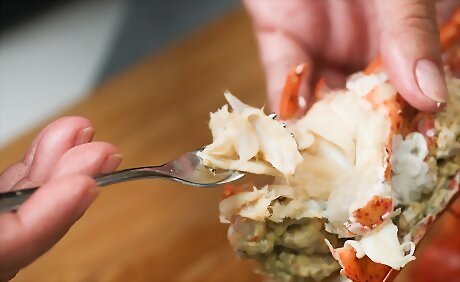
Throw away the gills. These are pale, feathery objects on the side of the lobster's body. Take care not to remove the meat in between them.
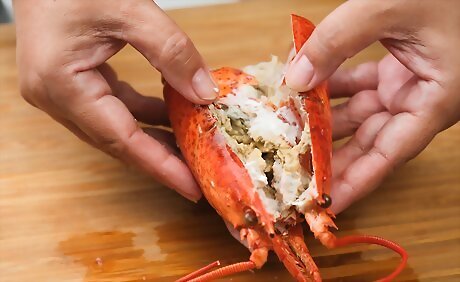
Throw out the sand sac. Pull out and throw away the gritty "sand sac" just behind its eyes.
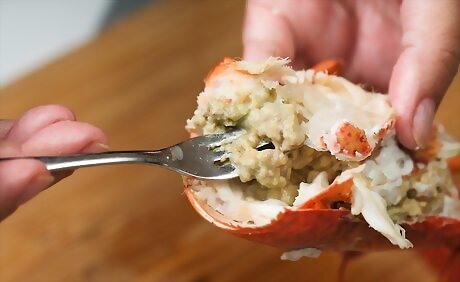
Save or discard the tomalley. This soft, green substance serves as the liver and pancreas. Not everyone finds this appetizing, but some people add it to sauces or spread it on bread. However, if the lobster's diet includes toxins, they accumulate in this organ. If you want to stay on the safe side, limit adults to one lobster's tomalley per day, and keep it away from children. Discard the tomalley if there is a shellfish ban in your area due to PSP (paralytic shellfish poison). If the lobster consumed toxic shellfish, the poison accumulates in the tomalley, but the meat is safe. If you are harvesting a raw lobster, the tomalley will be grey and very perishable. Keep it ice cold and cook it as part of a sauce within a few hours of killing the lobster.
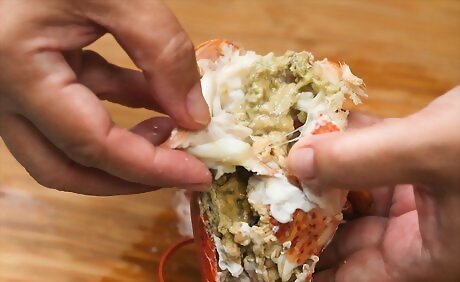
Pick out the meat from the body cavity. Fish out the little chunks of meat around the ribs. Discard the papery shells between them.
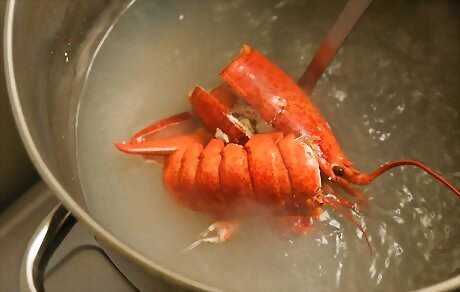
Boil the leftover shells into lobster stock. Simmer them for no more than 45 minutes. Overcooking them can ruin the flavor. Do not include the sand sac or gills in the stock.


















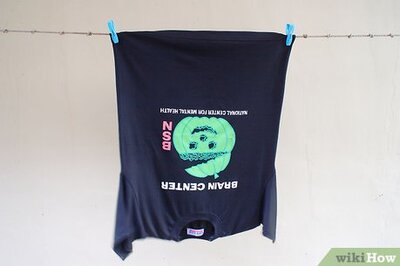

Comments
0 comment